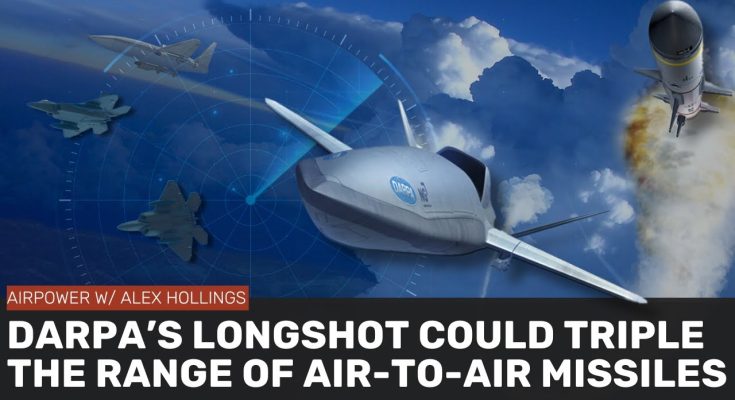The United States is advancing its air-to-air missile capabilities in response to evolving threats, particularly from near-peer adversaries like China and Russia. One of the most notable plans to enhance the range and effectiveness of its air-to-air arsenal involves tripling the reach of its existing missile systems. This initiative is not only aimed at extending the reach of American fighter jets but also at ensuring that U.S. forces maintain a technological advantage in aerial combat.
The AIM-174B: A Leap in Range and Capability
One of the primary developments in this effort is the AIM-174B, a variant of the Standard Missile-6 (SM-6), which is being modified for use as an air-to-air missile. The AIM-174B will provide U.S. aircraft with a remarkable increase in missile range—reportedly up to 400 kilometers, which is roughly three times the range of the current workhorse, the AIM-120 Advanced Medium-Range Air-to-Air Missile (AMRAAM). This extended range provides a significant advantage in air-to-air combat, allowing U.S. aircraft to engage adversaries at much longer distances, thus keeping enemy fighters out of their weapons’ range and enhancing the safety of American pilots.
This long-range capability also impacts the operational reach of fighter jets, meaning U.S. air superiority could be extended well beyond the current engagement zones. Aircraft equipped with the AIM-174B will be able to neutralize adversary threats before they get into striking distance, offering a key tactical edge.
The AIM-260 JATM: A Counter to Advanced Threats
In addition to the AIM-174B, the U.S. is also developing the AIM-260 Joint Advanced Tactical Missile (JATM), which aims to enhance the range and effectiveness of air-to-air engagements. The AIM-260 is designed to compete directly with some of the most advanced missiles in the world, such as China’s PL-15, which is known for its exceptional range and speed.
The AIM-260 will reportedly offer a range that exceeds that of the AIM-120D-3, with estimates suggesting it could exceed 100 miles. This will further enhance the U.S. military’s ability to engage long-range targets, even when adversaries attempt to use similar advanced missiles to strike from afar. The AIM-260 is expected to be integrated on multiple platforms, including the F-22 Raptor, F-35 Lightning II, and the F-15EX Eagle II, ensuring that the U.S. Air Force and Navy are equipped to deal with the rapidly evolving threats posed by foreign air forces.
A New Era of Aerial Warfare
The U.S. military’s focus on extending the range of its air-to-air missiles reflects a broader strategy to maintain its superiority in the skies. By extending missile ranges, the U.S. is not only ensuring that it can strike first but also that it has the ability to engage adversaries before they can get close enough to launch counterattacks. This shift towards longer-range missiles is part of a more comprehensive overhaul of military strategy and technology to address emerging threats in various theaters, including the Indo-Pacific region, where tensions with China are rising.
Moreover, Raytheon, one of the primary defense contractors involved in the production of these advanced missile systems, is ramping up production to meet the growing demand for such technologies. The company is increasing its production of the AIM-120 AMRAAM and AIM-9X Sidewinder missiles to ensure sufficient stockpiles for U.S. forces and its allies.
Conclusion
With these advancements, the U.S. is positioning itself to maintain a dominant edge in air-to-air combat. Tripling the range of air-to-air missiles is a critical step in ensuring that American fighters can engage at greater distances, denying adversaries the ability to strike first. As military technology continues to evolve, the integration of these new missile systems will be vital in keeping pace with increasingly sophisticated threats from rival nations.



